Taking advantage of the sunny and spring-like weather, even if we were well into the autumn, we decided to take a daily tour of Siena, one of the most beautiful cities in Tuscany. We knew that the mosaic floor of the Cathedral of Siena, open only a few months a year, was still uncovered and we could not miss the opportunity to admire it.
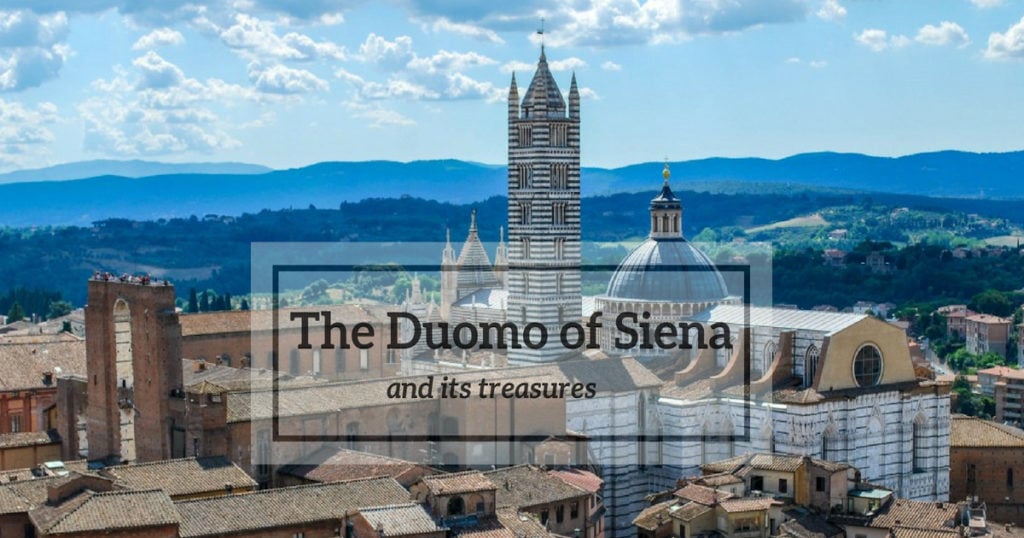
How to organize the visit to the Cathedral of Siena
In the early morning, we left my hometown Cecina on the Etruscan Coast, directly to Siena. We drove across one of the most beautiful areas of Tuscany, along a panoramic county road in the middle of rolling hills passing through Volterra and San Gimignano.

Once arrived, a stunning panorama of the Basilica of San Domenico, the Cathedral of Siena, and the red roof of old buildings, welcomed us into the city. Right after, walking through the center we reached the famous Piazza del Campo. Personally, even if I visited Siena several times, the view of this square leaves me breathless every time. I stared at this beauty for at least five minutes admiring its particular shell shape, the Torre del Mangia, and the Palazzo Pubblico (the town hall).
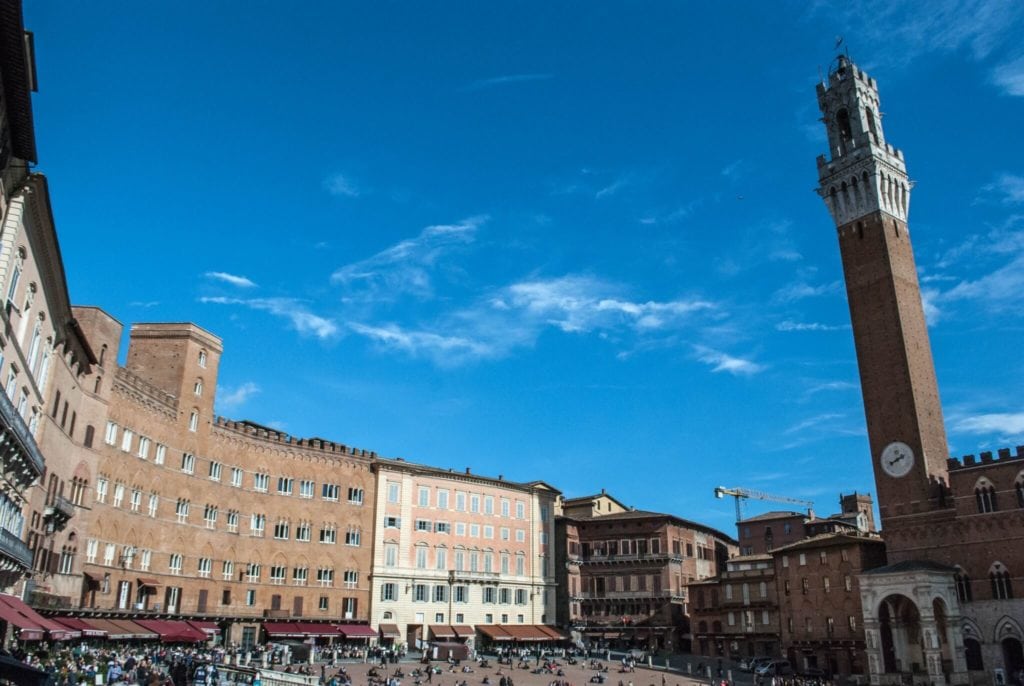
A Traditional Tuscan Lunch in Siena
Before the visit to the cathedral, we decided that was time for lunch. We chose a typical restaurant attracted by the big hams hung on the ceiling and by the traditional Tuscan menu full of delicacies. We could not choose a better place where rest and enjoy great food. Pici pasta with duck ragout, Tuscan cured meats, a delicious dish of Lampredotto with green parsley and red chili sauce, accompanied with a wicker red wine bottle. As a dessert, we got a mousse of ricotta cheese and chocolate Ricciarelli biscuits, a traditional cookie of Siena. It was something extraordinary for my taste.

The Complex of the Cathedral of Siena
The historical and artistic heritage of the complex of the Cathedral of Siena is managed by the “Opera della Metropolitana di Siena” (OPA), one of the most ancient Italian and European Institutions. We got the “OPA SI Pass all-inclusive” to visit all the monuments. After having experienced it, we recommend this ticket. The visit to the whole complex is a must-do to add to your bucket list when visiting Tuscany. For more info and tickets, visit the Opera Duomo website.
The Facade
The Cathedral of Siena, completed in 1263 is dedicated to the Holy Mary of the Assumption and is something beautiful. When I saw it, my first thought was: “How is possible to build such a wonderful monument!”. The facade is one of the most fascinating of all Italy and combines different styles: French Gothic, Tuscan Romanesque, and classical architecture. The bell tower is made of black and white marble stripes (the colors of Siena).
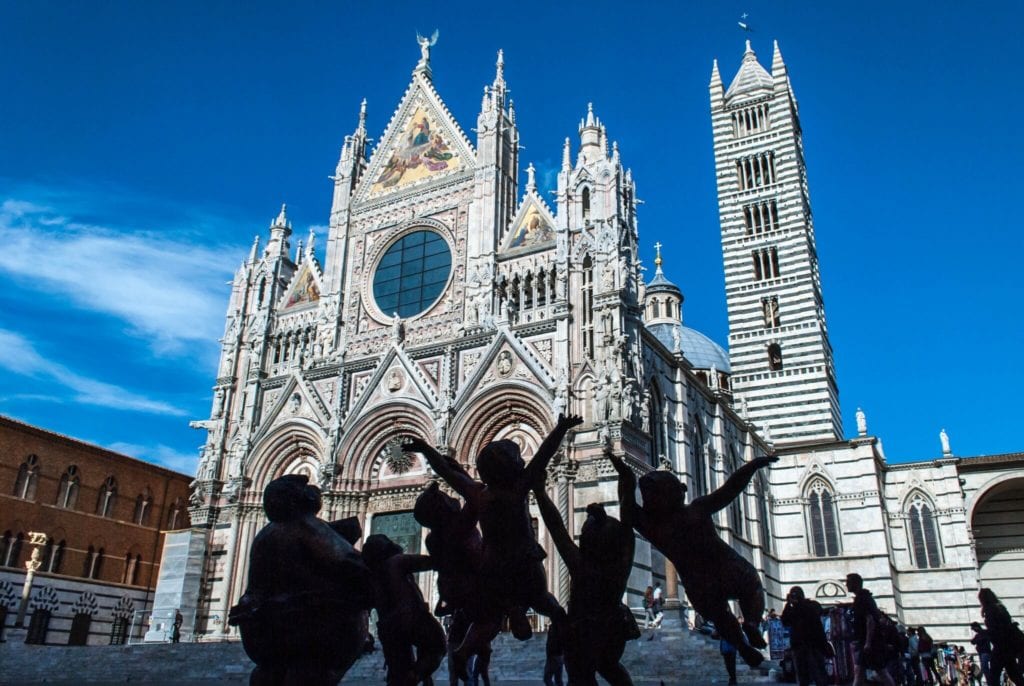
The Gate of Heaven
The visit to the Cathedral of Siena started from the Gate of Heaven. We climbed the stone spiral staircases reaching the starry vaults. Then we walked above the holy temple along rooms that have been off-limits for centuries. From the high ground, we enjoyed the views of the incredible interiors and the external panorama of the city roofs.
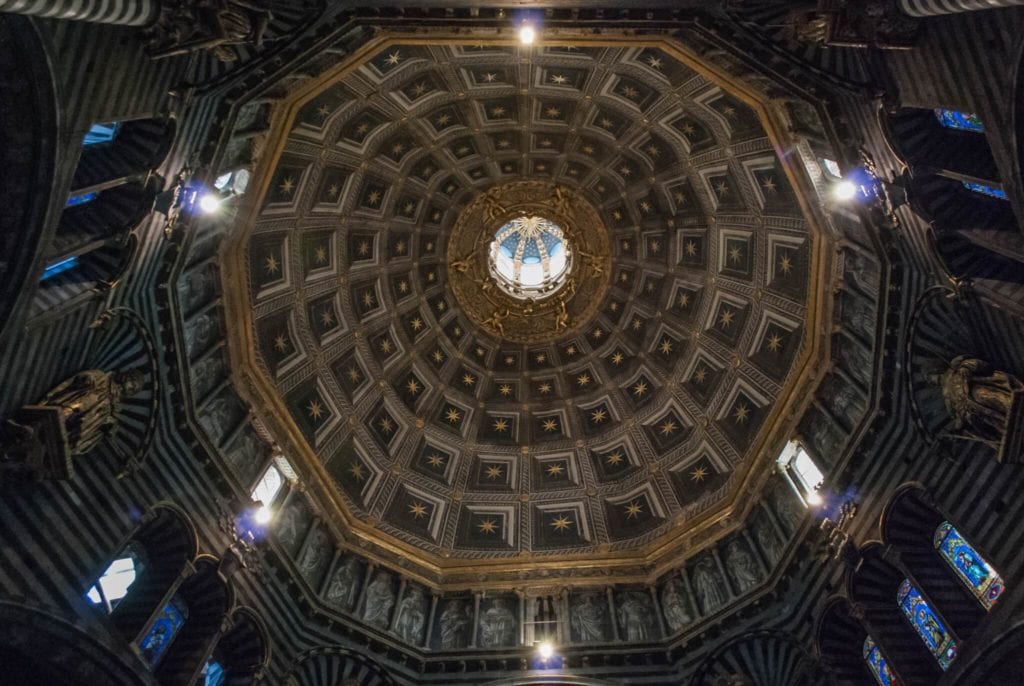
The mosaic floor and the interiors
The Cathedral of Siena, right inside, is huge. There are big columns in black and white marble, 172 carved Pope faces, a pulpit made of marble of Carrara, many works of art by Donatello, Bernini, and Michelangelo, and a marvelous starry vault. With no doubt, the most incredible thing is the marble mosaic floor. It consists of 56 panels, made by Sienese artists, representing scenes from the Old Testament and allegories. It can be seen only a few weeks each year, usually in June, July, August, September, and October. The original chromatic effects enlighten the marble carpet making it even more wonderful.
The Tuscan painter and architect Giorgio Vasari says about the floor:
The most beautiful, largest and most magnificent, that ever was made
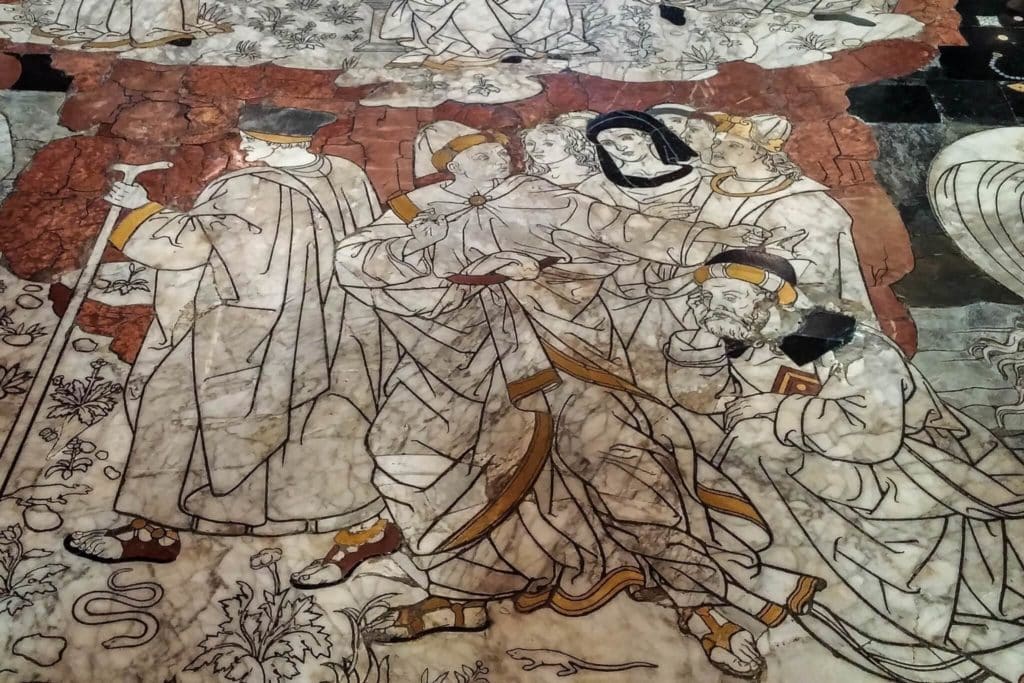
The Piccolomini Library inside the Cathedral of Siena
Siena Cathedral holds another small treasure. We talk about the Piccolomini Library and its wonderful decorations made by the Umbrian painter Pinturicchio. The library was created to contain books and a codex of the cardinal Francesco Tedeschini Piccolomini. He was the nephew of Pope Pius II.
The crypt under the Cathedral of Siena
The Crypt was discovered for the first time only in 1999, hidden under rubble heaps. The crypt shows many paintings of the thirteen century representing scenes from the Old and New Testaments. The ones concerning the three moments of the Passion of Christ captured our attention. The Crucifixion, the Deposition from the Cross, and the Entombment. We also appreciated the good preservation of the rest of the ancient columns and the frescoes. Their bright colors still capture the eyes of the many visitors.
The Baptistery of San Giovanni
Climbing down the marble stairs on the right side of the Cathedral of Siena, we reached the parish church of San Giovanni Battista. Built below the cathedral, it is famous and mentioned in every book of the history of the art for the “Baptismal Font”. It represents in six panels the stories of San Giovanni according to the Gospels and has a big importance for the greatest sculptors of the Renaissance.
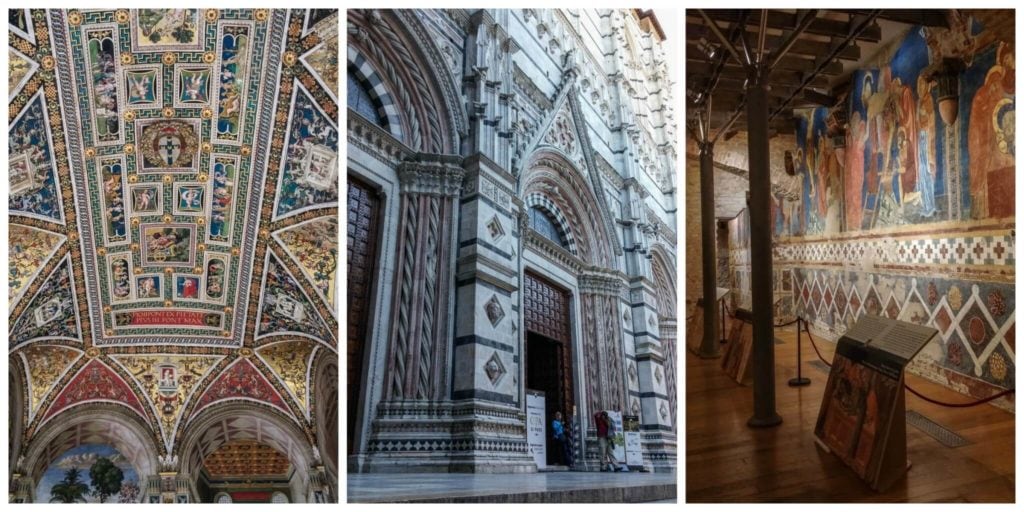
Panorama from the roof of the Facciatone
In 1339, the local Grand Council of the Bell voted for the enlargement of the cathedral of Siena, but less than twenty years later, the construction was abandoned due to the Black Death of 1348 and to the riskiness of some portions of the new building. The rest of the facade of the unfinished Duomo Nuovo, nowadays called Facciatone, is one of the best lookouts of the city and its surroundings.
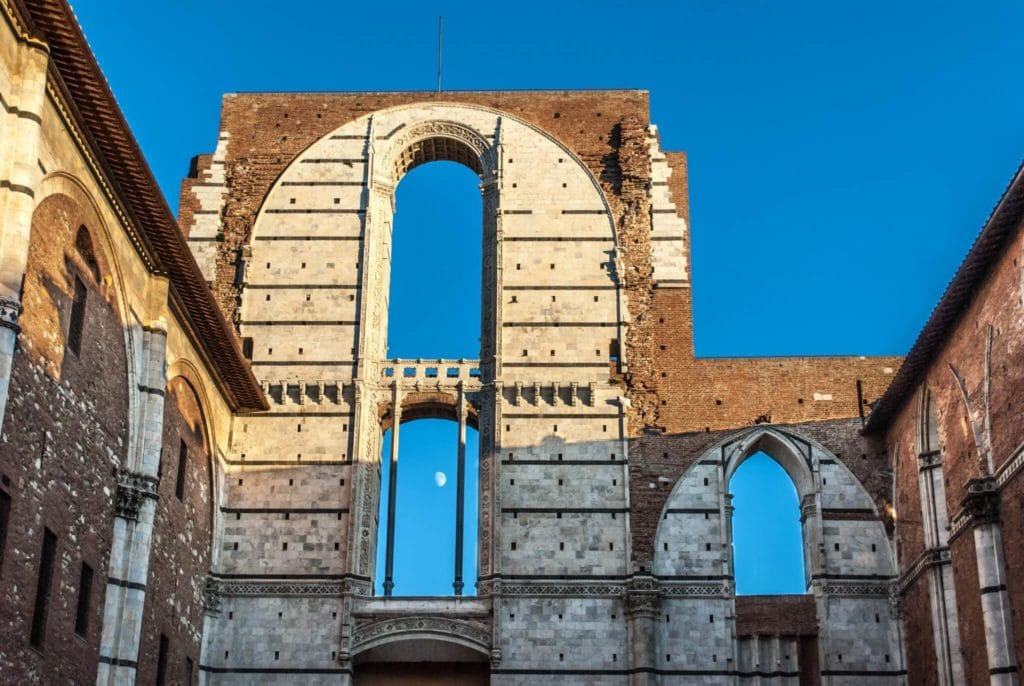
The Museo dell’Opera del Duomo
Our visit to the complex of the cathedral of Siena runs out with the oldest private museum in Italy. The museum stores many pieces of art that were part of the façade of the Duomo. We appreciated the big stained glass window by Duccio di Buoninsegna at the end of the aisle with all the marble statues of ancient Prophets, Philosophers, and Sibyls on both sides.
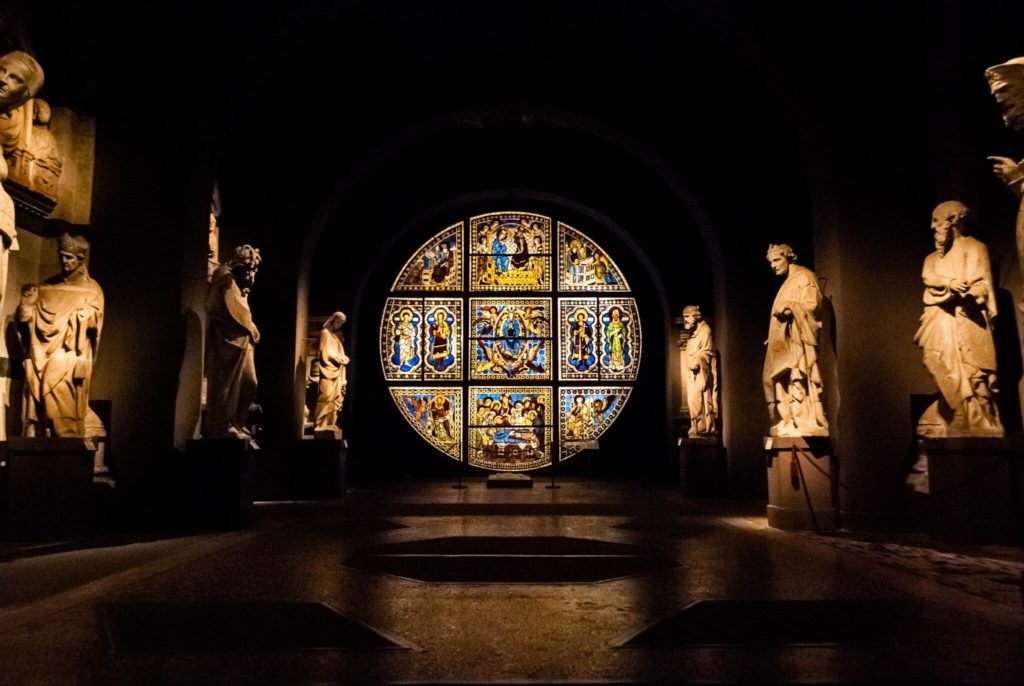
Before leaving the city, we had a quick look at the talking fountain of Fonte Branda. It has medieval origins and is one of the most ancient water fountains in Siena. Even the poet Dante Alighieri talks about the fountain in the Inferno of the Divine Comedy.
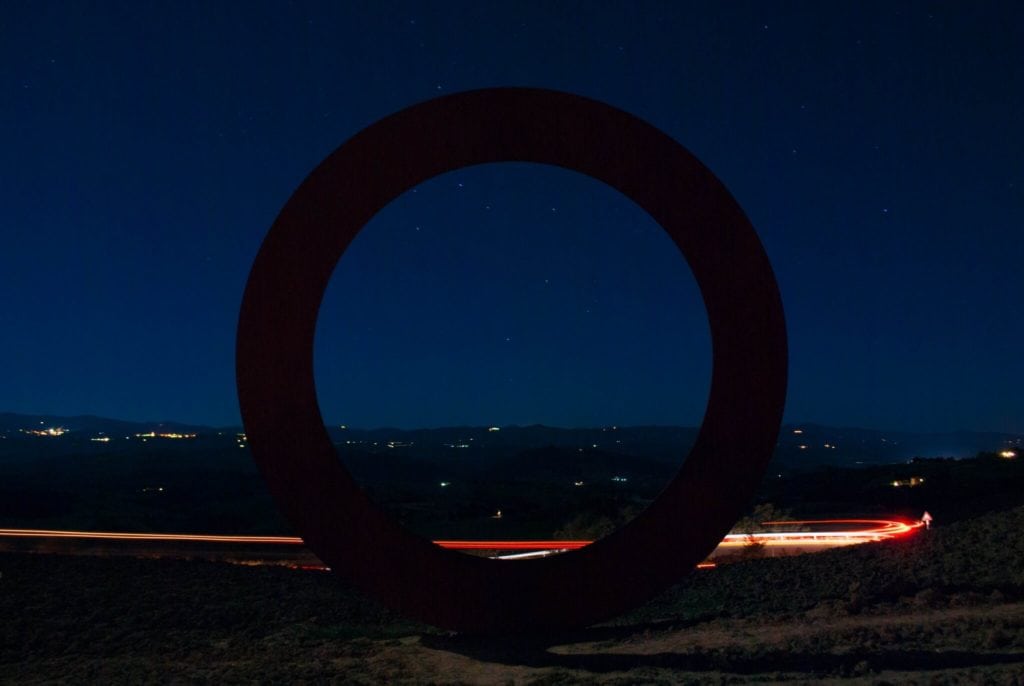
On the way back home, in the dark of the countryside, we bumped into a big lonely sculpture round shaped. Only the light of the moon illuminated the strange red installation. We immediately stopped the car and, equipped with our Reflex and tripod, took the last and suggestive picture of this nice day across Tuscany, visiting the Cathedral of Siena and other beauties of our region.
Pin It for Later!
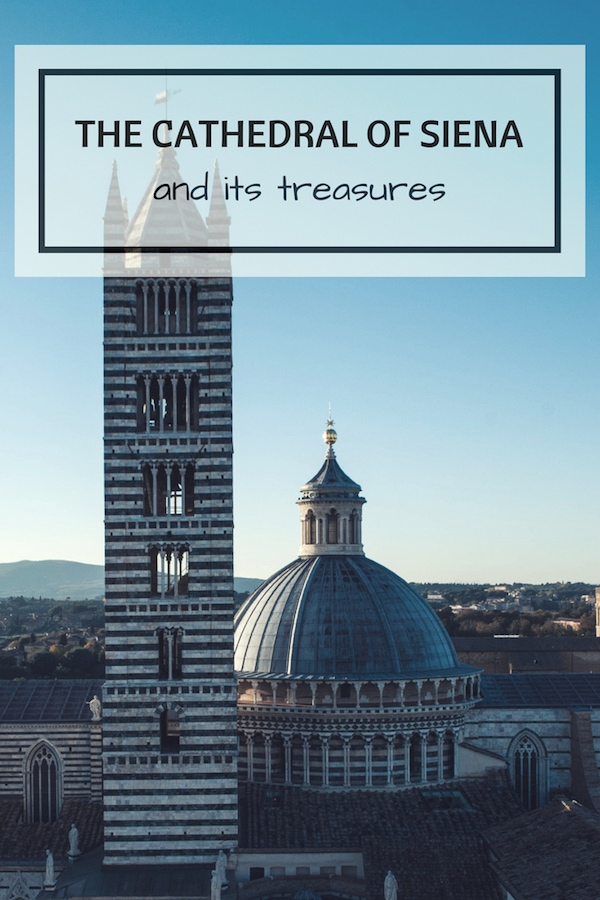
(Updated on January 17, 2023)
